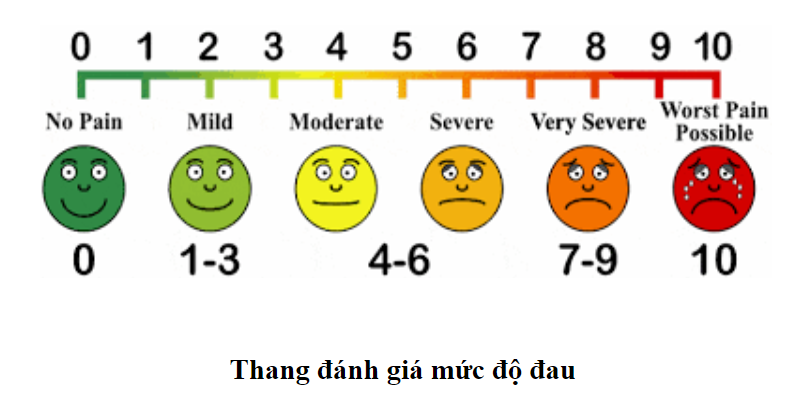A patient’s guide to surgery Chapter 3 - Postoperative Care
This document was written by Ms. Susana Gabriel Garcia, who has been working as a Nurse at Operating Room Unit, Vinmec Times City International Hospital.
After the surgery, patients are encouraged to perform breathing, position changing and muscle exercises as guided by our Nurses until when you can perform by yourself. Exercises will help prevent problems of lungs and blood circulation.
Part IX: Pain after surgery
To prevent pain after surgery your anesthesiologist in charge will use the most advance techniques to block the pain, and offer you the best pain relief allowing you a fast rehabilitation with less pain.
The objective of Vinmec is to provide “pain free surgeries”.
In order to determine the intensity of your pain the nurse could ask you to rate it on a scale of 0 (no pain) to 10 (worst possible pain). Your collaboration is therefore required.

Early activities after surgery
Your nurse will encourage you to change positions, do breathing exercises and muscle exercises until you can do them on your own. These exercises help prevent problems with your lungs and circulation.
Part X: Breathing exercises/ Muscle exercises
1. Breathing excercise
It is important to prevent pulmonary problems after surgery. Anesthesia irritates the respiratory tract, which increases secretion from the bronchi (cigarettes have the same effect.)
Also some postoperative medication and pain may decrease your ability to breathe deeply with ease.
For these reasons we strongly encourage you to follow the recommendations from your doctor and nurse to do breathing exercises with a device called an inspirometer.
Technique
- When you wake, start your exercises as soon as possible.
- In a comfortable position, preferably on a chair or sitting on your bed, place your mouth around the mouthpiece of the inspirometer.
- Take a deep breath (as if you were sipping on a straw to drink) so that the ball goes up as high as possible and keep it in position for 3 to 5 seconds)
- Repeat these exercises 5 to 10 times every hour for a few days following your surgery, or until you are able to walk around normally.

2. Leg muscle exercise
Move your legs often, bending and extending them. Flex and extend your feet in order to promote blood circulation and prevent blood clots in your veins (thrombophlebitis).

Part XI: Diet, Elimination and Sleep
1. Diet
You cannot drink or eat without your doctor’s authorization. Your diet will be adjusted according to your condition. We ensure to provide patients with an appropriate diet based on our nutritionists’ advice, 03 meals and 02 snacks are offered per day a room service staff will come to get your orders for the following day.
In case of any special orders, please inform the ward nurses.
For medical reasons, it is not allowed to bring foods from outside into patient’s room.
2. Elimination
Anesthesia and surgery may sometimes cause intestinal functions to temporarily stop, which causes a bloated belly and the absence of bowel sounds. The healthcare staff will monitor if you urinate and have bowel movements.
Getting up soon after surgery, exercising and staying hydrated contribute to keep the bowels functioning properly. The presence of gas (farts) indicates that there is intestinal movement again and that you can start eating.
3. Sleeping
When sleeping on your back, palce a pillow under your knees. A pillow with neck support and a roll (towel or thin blanket) around the waist are also helpful.
Place a pillow between your knees when lying on your side. Use neck and waist support as needed.

Part XII: Getting out of bed
Your surgeon will decide when you can get out of bed. Usually, you start moving soon after surgery because it improves circulation, prevents congestion in the lungs and eliminates gas from the abdomen. The healthcare staff will help you get out of bed at the appropriate time.

For any information, please contact our Hotlines:
- Vinmec Times City International Hospital: (+84) 2439743556
- Vinmec Central Park International Hospital: (+84) 2836221166 or (+84) 2836221188
- Vinmec Da Nang International Hospital: (+84) 2363711111
- Vinmec Nha Trang International Hospital: (+84) 2583900168
- Vinmec Hai Phong International Hospital: (+84) 2257309888
- Vinmec Ha Long International Hospital: (+84) 2033828188
- Vinmec Phu Quoc International Hospital: (+84) 297398558
Read next chapters of A patient’s guide to surgery:

